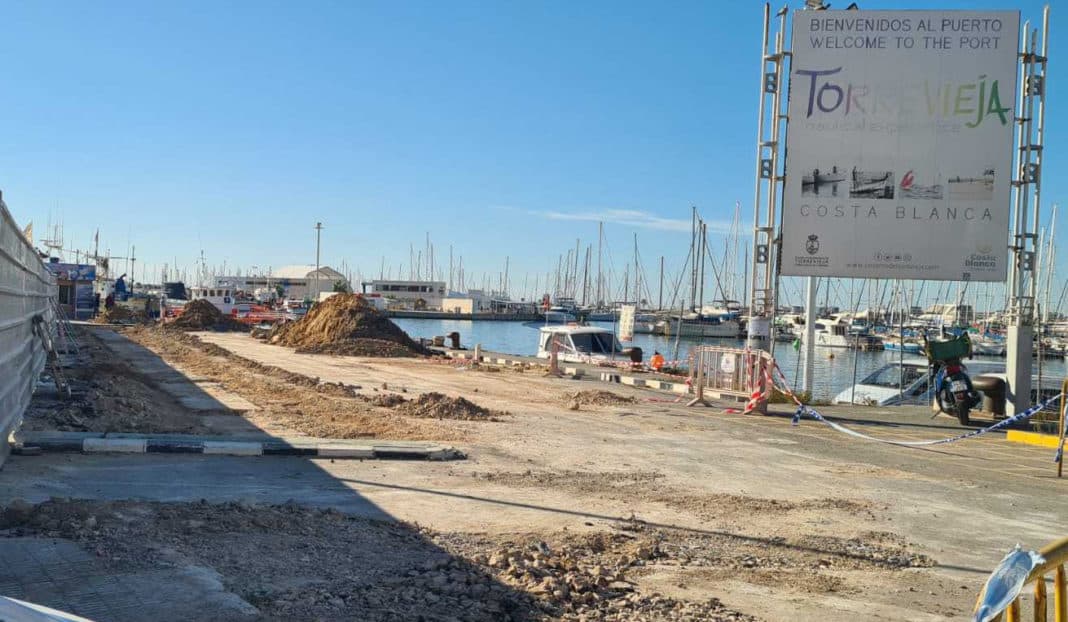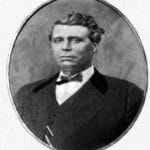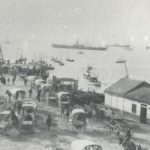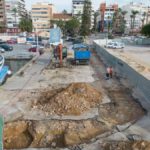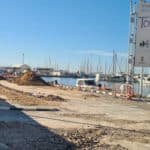After just two days of surveys by archaeologists from the Arpa Patrimony company, the profile of the historic Turbio, or Mínguez dock in Torrevieja, has been unearthed, clearly exposing the ashlars, large square-cut stones, of the town’s 19th century mooring, the centre of the commercial seafaring and fishing activity in Torrevieja, before the city was able to build its own port.
Expert archaeologists now have the mission of working on the ground and documenting the remains, after which the Torrevieja Council must then decide what to do with them.
For decades – now it is seen more clearly than ever – the protected area in the catalogue of protected assets of the General Plan, has been buried under tarmac, and occupied by the private parking lot of the sports marina, where the fencing of the area concessioned to the Paseo del Mar project is located, just a few centimetres from the eastern cliff, which has now been discovered by the excavating machines. The pier has about a century and a half of history.
The archaeological excavation was a recent municipal initiative, because the area located around the docking area of the Tabarca tourist boats, is part of the section to be redeveloped by the Council as part of it’s new leisure area.
Beyond its desire for the preservation of its legacy, the council is complying with the legislation on the preservation of cultural heritage, although what it will do with the remains – in this case it is a complete structure – will be the subject of future discussions.
At the time of the original construction Torrevieja was just salt and sea and with the arrival of the 19th century, the construction of the port was perhaps its most pressing need, since the population was experiencing a constant growth of the merchant and fishing fleet.
The engineer Agustín Elcoro was in charge of drafting the first project in 1860, which was to serve as a harbour for 150 ships. Thus, the works began, but were soon brought to a halt due to lack of breakwaters. The long-awaited port was also hindered by political pressure from Cartagena and Alicante, considering that it could pose a serious threat to their own economic interests, since they too aspired to benefit from the shipment of salt.
In 1874, Antonio Mínguez, from Torrevieja, obtained a concession to build a loading and unloading dock in the area of the legendary La Marina bar, although the works were not authorised until 1876, becoming the first port facility in Torrevieja. It was the only private dock that existed in the town during the last quarter of the 19th century and the first half of the 20th; the only one that Torrevieja had until the beginning of construction work on the first eastern breakwater in 1915.
Mínguez, who was known by the nickname “El Turbio”, was a speculator, entrepreneur, merchant and industrialist in Torrevieja during the second half of the 19th century. He took on the management of his father’s ships and businesses, at a time when voyages to Oran in western Algeria were very profitable due to smuggling, and while the town was being rebuilt and recovering from its total destruction after the earthquakes of 1829.
“El turbio” as he was known, was also a councillor, and he even held the mayor’s office on several occasions. While a councillor he was involved in multiple businesses but the one from which he obtained the greatest benefit was with the exploitation of his loading and unloading dock, designed in 1874, for which he owned the concession granted by the City Council.
Now, however, almost 150 years later, the Council has set as its objective the historical and heritage recovery of the Mínguez Dock as part of the city’s museum, of cultural and tourist importance, to enhance the coastline between the Salt Eras and the port area.
The archaeological contract, costing 17,157 euros, allows excavations and ten transversal surveys to be carried out, that will serve to delimit the eastern front of the infrastructure. Actions to be taken thereafter will very much depend on what is found during the coming days.

